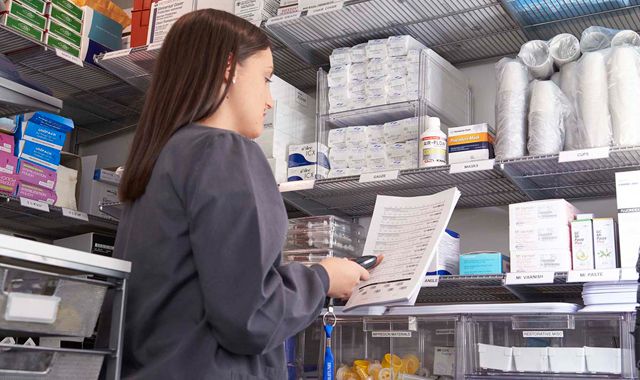The real cost of your HazCom binder
As the second most common OSHA violation, most dental offices already have the Hazard Communication Standard (29 CFR 1910.1200) on their radar. Each office should have at least one staff member who understands the requirement to keep safety data for products both “readily available” and “up to date” in a work area regularly used by employees.

As the second most common OSHA violation, most dental offices already have the Hazard Communication Standard (29 CFR 1910.1200) on their radar. Each office should have at least one staff member who understands the requirement to keep safety data for products both “readily available” and “up to date” in a work area regularly used by employees.
This particular requirement is surrounded by confusion and most offices are stuck using archaic methods for managing Material Safety Data Sheets (MSDS), now called Safety Data Sheets (SDS), which ends up costing more than they think.
Trending article: The top 10 things you need to know about ICD-10
Let’s start by clearly outlining what OSHA requires be done with regard to SDSs. The purpose of the regulation is to ensure chemical safety in the workplace by making information and hazards of the chemicals on site easy to find and accurate. This puts two main responsibilities on dental offices: (1) keeping an organized SDS library that employees understand how to navigate and (2) making sure that library has the most up-to-date SDSs available.
It’s important to understand that the safety data library must be specific to the business. OSHA has been clear that having employees search online for an SDS when an accident occurs doesn’t cut it, nor does it work to buy a book of SDSs for common dental products. Offices need to have their own library, with the SDSs from all of the products purchased and used in their specific workplace. SDS libraries also cannot be kept behind locked doors or passwords.
Related reading: Patterson Dental introduces AutoSDS at Chicago Midwinter meeting
Most commonly, dental offices meet this regulation by assigning a staff member to maintain an SDS or HazCom binder. Binders can work, but here’s the trick: SDSs change. Product formulas are altered, new research can identify hazards for chemicals that were previously thought harmless, and newly introduced regulations can impact the way safety data is required to be formatted. This greatly complicates managing a binder.
A common misconception is that suppliers of products are required to automatically send updated sheets as they come. In fact, OSHA only requires suppliers to send an updated SDS when you order a product or when you request one. Some distributors and suppliers go above and beyond the requirements, but not all do.
Trending article: 6 things the dental industry needs to address now
To ensure compliance while using binders to keep SDSs up to date requires staff time. Regulatory experts estimate that an average of 12 hours per month should be spent managing a binder to keep it always up to date. Most of those 12 hours should be spent contacting distributors or manufacturers to look for updated SDSs. Being out of compliance risks huge fines (up to $7,000 per day per incident) and leaves gaps in important safety data should an accident occur. Having a single sheet missing or outdated can constitute an incident.
But there’s a better way. With today’s technology, cloud solutions offer a means of maintaining a binder without ever searching for an updated SDS again. Subscribing to a shared database maintained by a dedicated group is cheaper and more effective than assigning a hygienist or dental assistant to do so. When you really start to analyze the costs of SDS management, it becomes clear: it’s time to replace your HazCom binder.